Classic Commentaries and Studies on Isaiah Upgrade (18 vols.)
Digital Logos Edition
This product has been transferred from Community Pricing to Pre-Pub. The actual funding level may be lower than it appears, which could delay production. The amount of funding still needed will be evaluated and updated soon.
Overview
The Classic Commentaries and Studies on Isaiah Upgrade comprises some of the most important scholarship ever written on the book of Isaiah. It includes several technical commentaries that address issues pertaining to structural and linguistic questions and do so largely in the tradition of German “higher criticism.” Other semi-technical commentaries examine a comprehensive list of technical issues, but also go to great lengths to incorporate critical historical examination, and to explain the biblical text as an important document to the Christian faith. Several volumes of essays and lectures deal with the nature and intent of Isaiah’s prophecies and seek to provide a coherent narrative against which Isaiah may be understood. Isaiah 53 is the singular focus of three volumes and readers will find, in addition to Christian interpreters, an extensive list of Jewish interpretations of the “suffering servant.” This collection also contains the work of several scholars whose efforts continue to determine the course of academic research on Isaiah. They include Bernhard Duhm, Adolf Bernhard, S. R. Driver, Moses Margoliouth, and Robert MacCulloch.
With the Logos editions, these valuable volumes are enhanced by amazing functionality and features. Scripture and ancient-text citations link directly to English translations and original-language texts, and important terms link to dictionaries, encyclopedias, and a wealth of other resources in your digital library. Perform powerful searches with the Topic Guide to instantly gather relevant biblical texts and resources. Tablet and mobile apps let you take the discussion with you. With Logos Bible Software, the most efficient and comprehensive research tools are in one place so, you get the most out of your study.
Build your library on Isaiah with our Studies on Isaiah collection!
Key Features
- Features some of the most important scholarship ever written on Isaiah
- Presents detailed structural, linguistic, and historical analysis of Isaiah
- Provides several mid-level commentaries designed to augment knowledge of Isaiah while edifying personal faith
- Explains the complex interpretive issues readers face when reading Isaiah’s prophecies
- Contains three volumes that focus exclusively on the interpretive issues in Isaiah 53
Product Details
- Title: Classic Commentaries and Studies on Isaiah Upgrade
- Volumes: 18
- Pages: 8,838
Individual Titles
- The Book of the Prophet Isaiah by Ebenezer Henderson
- Christ Crucified: or The Marrow of the Gospel, Evidently Holden forth in Seventy Two Sermons on the Whole Fifty Third Chapter of Isaiah by James Durham
- Isaiah as It Is: Or Judah and Jerusalem, the Subjects of Isaiah’s Prophesying by Alexander Keith
- Lectures on the Prophecies of Isaiah by Robert MacCulloch
- Lectures on the Prophecies of Isaiah, vol. 2 by Robert MacCulloch
- Lectures on the Prophecies of Isaiah, vol. 3 by Robert MacCulloch
- Lectures on the Prophecies of Isaiah, vol. 4 by Robert MacCulloch
- The Penitential Hymn of Judah and Israel After the Spirit: An Exposition of the Fifty-Third Chapter of Isaiah by Moses Margoliouth
- The Authenticity and Messianic Interpretation of the Prophecies of Isaiah Vindicated in a Course of Sermons Preached before the University of Oxford by R. Payne Smith
- Lectures on the Book of Isaiah by William Kelly
- The Century Bible: Isaiah I–XXXIX by O. C. Whitehouse
- The Century Bible: Deutero-Isaiah: XL–LV, Trito-Isaiah: LVI–LXVI by O. C. Whitehouse
- Isaiah: A Study of Chapters I–XII by H. G. Thomas Mitchell
- The Prophecies of Isaiah by C. Von Orelli
- The Fifty-Third Chapter of Isaiah According to the Jewish Interpreters, 1. Texts edited by Adolf Bernhard
- The Fifty-Third Chapter of Isaiah according to the Jewish Interpreters, 2. Translations translated by Adolf Bernhard & Samuel Rolles Driver
- Handkommentar zum Alten Testament: Das Buch Jesaia by Bernard Duhm
- Der Prophet Isaias by Peter Schegg
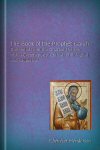
Written at the early stages of “critical scholarship,” The Book of the Prophet Isaiah is a technical linguistic commentary. Its main purpose is to analyze the lexical usage, syntactical arrangement, and structural form of Isaiah in order to provide an accurate, yet lucid, translation. Isaiah contains a large amount of poetic material, and the integration of all three components is critical for this task. To this end, the author utilizes related Semitic dialects and languages, such as Aramaic, in order to illuminate the meanings of particular words while accenting his translation in light of structural observations also gleaned from these related languages. Each of the author’s decisions is explained thoroughly in the commentary, and interaction with other scholars is noted where pertinent. Henderson intentionally avoids commentary on matters of faith, yet he does render judgments on the nature of Isaiah’s prophecies.
Ebenezer Henderson (1784–1858) was one of the most accomplished linguists of his time. Attaining mastery of nearly 20 languages including—the Semitic, Scandinavian, and Romantic families—Henderson worked tirelessly to translate the Bible and to distribute it throughout Europe and Russia. He spent more than a decade working with the British and Foreign Bible Society before resigning over translation disputes in the Society’s Turkish Bible. In 1818, he founded the first Congregational Church in Sweden, and then traveled to Russia by the invitation of Prince Alexander Galitzin to assist the Russian Bible Society. In 1825, he returned to England where he was appointed a tutor at Mission College, and later, professor of Oriental languages Highbury Congregational College.
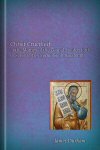
Christ Crucified: or the Marrow of the Gospel contains 72 sermons that illuminate the work of Christ Isaiah 53. Expository in approach, author James Durham unpacks the salient points of Isaiah’s iconic prophecy phrase by phrase. His work overflows with Christological teaching, is thoroughly supplemented by texts from across the Old Testament, and maintains a consistent tone of instruction and devotion.
James Durham (1622–1658) was professor of divinity at Glasgow University, Glasgow. He served as captain in the English Civil War, and became a minister in 1647, and shortly after was named chaplain to the king. Though most of his books were published posthumously, he was a prolific scholar widely regarded by his peers for his dedication to his work and for his moral character. Suffering from perennially bad health, he died at age 36.
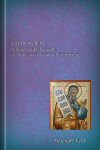
One of the main challenges of reading prophetic texts is determining the meaning of its referents. Does “Zion” refer to Jerusalem, or to something else? Isaiah as It Is employs a “literal” hermeneutic in order to provide a clear exposition of the biblical text that nonetheless respects the possibility and authenticity of future-oriented prophecies. An introductory essay provides the basic principles involved in such a task—including the belief that some prophecies are so obscure they must remain a mystery—while the rest of the book examines Isaiah’s individual prophecies by drawing on these hermeneutical principles with the hope of bringing clarity to vague prophetic referents.
Alexander Keith (1791–1880) was a minister in the Church of Scotland, and served as minister in St. Cyrus, Scotland for 26 years. An Old Testament scholar, he was educated at Marischal College. Keith was also a missionary to Jews and traveled to Jewish villages in Europe and to the Holy Land in the hopes of finding converts. His book The Land of Israel According to the Covenant with Abraham, with Isaac, and with Jacob is the account of his missionary journeys.
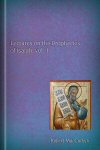
Volume one of Robert MacCulloch’s Lectures on the Prophecies of Isaiah examines Isaiah 1–12—from Isaiah’s unsettling call to the story of King Ahaz. Covering all facets of the text, MacCulloch’s commentary is comprehensive in scope and examines each genre of literature—whether historical, prophetic, or poetic—in detail. He provides academic commentary by addressing historical or linguistic questions as well as detailing practical applications for Christian living and issues related to Christian doctrine.
Robert MacCulloch (1740–1884) is the son of famous the famous English preacher William MacCulloch, and minister of Dairsie for more than 50 years. He published his father’s voluminous collection of sermons, and became a prolific sermon writer and scriptural commentator during his own career.
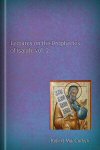
Volume two of Robert MacCulloch’s Lectures on the Prophecies of Isaiah examines Isaiah 13–30—from Isaiah’s prophecies concerning the nations to instruction on the distinction between true and false deliverance. Covering all facets of the text, MacCulloch’s commentary is comprehensive in scope and examines each genre of literature—whether historical, prophetic, or poetic—in detail. He provides academic commentary by addressing historical or linguistic questions as well as detailing practical applications for Christian living and issues related to Christian doctrine.
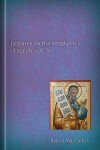
Volume three of Robert MacCulloch’s Lectures on the Prophecies of Isaiah examines Isaiah 31–50—God’s condemnation of those who appeal to the nations for help in the midst of his judgment, Isaiah’s songs of mercy, the story of King Hezekiah and Sennacherib, and introductory messianic prophecies. Covering all facets of the text, MacCulloch’s commentary is comprehensive in scope and examines each genre of literature—whether historical, prophetic, or poetic—in detail. He provides academic commentary by addressing historical or linguistic questions as well as detailing practical applications for Christian living and issues related to Christian doctrine.
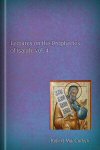
Volume four of Robert MacCulloch's Lectures on the Prophecies of Isaiah examines Isaiah 51–66:24—Isaiah’s elegant prophecies about the coming messiah and the salvation he will bring to his people. Covering all facets of the text, MacCulloch’s commentary is comprehensive in scope and examines each genre of literature—whether historical, prophetic, or poetic—in detail. He provides academic observations such as historical or linguistic questions as well as detailing practical applications for Christian living and issues related to Christian doctrine.

The 53rd chapter of Isaiah, also known as “The Penitential Hymn of Israel and Judah” is one the Bible’s most famous—and most debated—passages. In this book, Moses Margoliouth examines the chapter through historical, linguistic, and theological analyses. He notes pertinent historical details about the world in which the prophecy was written, points to New Testament fulfillments, and addresses text-critical and linguistic matters in his footnotes. Margoliouth also employs redaction and rhetorical criticism, comparing passages in Isaiah 53 with other Old Testament prophetic books, while attempting to discern why they appear in Isaiah 53 as they do in extant texts. Comprising six lectures, this book focuses on issues of academic interest, but is accessible to students who are in the early stages of studying Isaiah.
Moses Margoliouth (1820–1881) was educated at Trinity College in Dublin, and became a well-respected minister in the Church of England. He converted to Christianity in 1837 under guidance from Jewish missionaries, founded the magazine The Star of Jacob served as editor of the The Hebrew Christian Witness, and helped revise the English Old Testament.

These nine sermons examine eight of Isaiah’s most famous prophecies concerning the messiah. R. Payne Smith covers Isaiah 6:14, 9:6, 11:1–2, 41:1, 42:1–4, 52:13, 53:4, and 65.17. With each passage, he seeks to identify its specific role in the overall prophetic messianic narrative found within the Old Testament. Asserting that no one passage of Scripture can point us to the messiah, he uses these passages to show how each one contributes to a coherent expression of messianic expectation in Isaiah and the Old Testament. He interprets each passage as pointing to the same object—the messiah—but with different means. In doing so, he also shows how the prophecy should be understood as layered and complex, not simply as a straightforward statement about future events.
R. Payne Smith (1818–1895) was professor of divinity at Oxford University, Oriental sublibrarian at the Bodleian Library at Oxford University, and canon of Christ Church. He held the latter post from 1865 to 1870. Smith also studied at Pembroke College, Oxford University, and in 1843 was named as a fellow. In 1843 he was ordained a deacon and priest. In 1870 he gave the highly esteemed Bampton Lectures at Oxford, and then served as a member of the Old Testament Revision Committee for its duration.
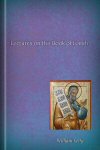
Lectures on the Book of Isaiah covers the entirety of Isaiah. Written in a narrative style—and reading more like a history of Isaiah’s world than a traditional commentary—William Kelly’s work is informative but not technical. It explains prophetic utterances and poetic material within the historical context that brought them about, and supplements the historical information provided in Scripture with information discovered in extra-biblical texts and archaeological data. He then interprets the historical data in relationship to Isaiah’s articulation of the coming messianic blessing.
William Kelly (1826–1906) was educated at Trinity College, Dublin. He was prominent member of the Plymouth Brethern, and a very prolific writer. His work enjoyed high esteem among churchmen and scholars, and included God’s Inspiration of the Scriptures, Christ’s Coming Again, and numerous sermons on Isaiah, the Gospel of John, and Hebrews.
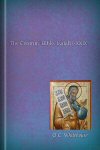
The Century Bible: Isaiah I–XXXIX
- Author: O. C. Whitehouse
- Publisher: T. C. & E. C. Jack, Ltd.
- Publication Date: 1904
- Pages: 381
The Century Bible is one of the earliest attempts to combine extensive explanatory notes with the biblical text for the purpose of augmenting study of the Bible. Volume one covers the first 39 chapters of Isaiah. While similar in style to a commentary, and also resembles a modern “study Bible.” O. C. Whitehouse provides an informative introduction covering authorship, genre, and its position in the Christian canon. He also provides commentary on Isaiah throughout and uses the Revised Version of the Bible. It includes a map of Judah and Israel, as well as images of significant sites and artifacts and Whitehouse’s observations on the text.
O. C. Whitehouse was principal of Cheshunt College, and published extensively on issues in the Old Testament and the Hebrew language.
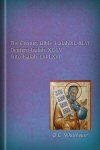
The Century Bible: Deutero-Isaiah: XL–XLVI, Trito-Isaiah: LVI–LXVI
- Author: O. C. Whitehouse
- Publisher: T. C. & E. C. Jack, Ltd.
- Publication Date: 1904
- Pages: 350
The Century Bible is one of the earliest attempts to combine extensive explanatory notes with the biblical text for the purpose of augmenting study of the Bible. Volume two covers the last 26 chapters of Isaiah. While similar in style to a commentary, and also resembles a modern “study Bible.” O. C. Whitehouse provides an informative introduction covering authorship, genre, and its position in the Christian canon. He also provides commentary on Isaiah throughout and uses the Revised Version of the Bible. A map of Judah and Israel is included as well as images of significant sites and artifacts and Whitehouse’s observations on the text.
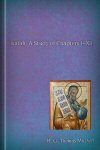
Citing the perennial confusion of many readers when engaging commentaries, H. G. Mitchell provides a conversational commentary that seeks to explain Isaiah to the general reader. Mitchell’s writing emphasizes the necessity of leading readers to fully grasp Isaiah’s first 12 chapters, and scholarly discussions are kept to a minimum—they are only referenced when they help illuminate the meaning of the text. Mitchell explains difficult poetic and prophetical passages with care, and provides thorough descriptions of the historical events recorded in Isaiah while also supplementing them with extra-biblical material.
H. G. Mitchell was professor and Old Testament scholar at Boston University, and was ordained in the Episcopal Church. He was a prolific writer, and though his work tended to stir controversy, he was well regarded by both his academic peers and within the Episcopal Church.
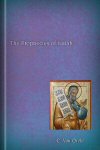
The Prophecies of Isaiah covers the entire book of Isaiah in two sections. Just under 350 pages, it is a succinct commentary that touches on the major interpretive, grammatical, and historical issues, and appeals to both the academically minded reader and to readers who simply wish to learn about the book of Isaiah. The author provides his own translation of the text, examining introductory issues such as authorship, genre, and historical time period. The commentary itself proceeds pericope by pericope, dealing with each distinct passage individually but relating it to its surrounding context within the book of Isaiah. Throughout, the author maintains a commitment to critical inquiry within the framework of belief in the divine inspiration of Scripture, believing that critical inquiry supports authentic faith.
C. Von Orelli (1846–1912) was a Swiss theologian and professor at the University of Basel. He was educated at the University of Lausanne. He also studied theology at Tübingen, and Oriental languages at Leipzig. He was a prolific scholar publishing commentaries on Isaiah, Jeremiah, Ezekiel, and a single volume on the 12 Minor Prophets.
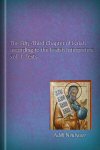
This volume is an anthology of Jewish responses to Christian readings of Isaiah 53. While the interpreters address the chapter as a whole, 53:13 receives particular attention and the vast majority of Jewish scholars in this volume address it directly. Throughout, interpreters state what they see as the major issues that conflict with the Christian interpretation of Isaiah 53, including the chapter’s lack of specificity about the messiah, grammatical issues, and Israel’s historical understanding of the messiah. Each commentator writes in his own language, and the volume includes manuscripts from more than 60 sources.
Adolf Neubauer (1831–1907) was educated in rabbinic literature and was reader of Rabbinic Hebrew at Oxford University. He received an honorary doctorate from the University of Heidelberg in 1890. He was a widely sought-after editor and translator of Hebrew texts, and established his preeminent reputation in 1868 with the publication of La Géographie du Talmud, a commentary on the geographical data of Palestine spread throughout the Talmud and other ancient Jewish literature. Also in 1868, he was appointed as sublibrarian at Oxford’s renowned Bodleian Library and spent the next 18 years cataloguing their Hebrew manuscripts. The catalogue appeared in 1886 and contained more than 2,500 entries. During that same time period, he published and edited numerous ancient Hebrew manuscripts, including The Original Hebrew of a Portion of Ecclesiasticus, Hebräische Berichte über die Judenverfolgungen Während der Kreuzzüge, and Les Rabbins Français du Commencement du XIVe Siècle to L'Histoire Littéraire de la France. He was also the first to discover fragments from the Hebrew book, Ben Sira.

Volume two of The Fifty-Third Chapter of Isaiah according to the Jewish Interpreters contains the translations of the texts found in volume one. With the help of distinguished Oriental-language scholar Samuel Driver, Neubauer presents Jewish responses to the Christian interpretation of Isaiah 53, with a special emphasis on Isaiah 53:13. Throughout, interpreters state what they see as the major issues that conflict with the Christian interpretation of Isaiah 53, including the chapter’s lack of specificity about the messiah, textual issues, and Israel’s historical understanding of the messiah. With a helpful preface to the translation by Oxford professor E. B. Pusey, this book presents commentary in English from more than 60 sources.
Samuel Rolles Driver (1846–1914) was one of the most distinguished Old Testament scholars of his era. Primarily concerned with textual and critical issues in the Old Testament, he published commentaries on the Hebrew texts of Samuel, Leviticus, Joel, Amos, Daniel, Deuteronomy, Job, Jeremiah, the Minor Prophets, and Genesis. He also published Isaiah, His Life and Times, Hebrew and English Lexicon of the Old Testament (popularly known as “Brown–Driver–Briggs”), and Introduction to the Literature of the Old Testament. He was an English divine, and was educated at Winchester and New College, Oxford.
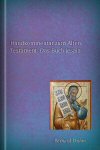
Duhm’s commentary is a pioneering work not only in its critical exegesis of the Isaianic text, but also in what it led the author to propose. Duhm was the first scholar to assert a three-author theory based on critical grounds. His commentary focuses on the literary structure of Isaiah, as well as its content and this emphasis led him to conclude that Isaiah was composed by three distinct authors. Duhm divides Isaiah into “First Isaiah” or “Isaiah of Jerusalem” (chapters 1–39), “Second Isaiah” or “Deutero-Isaiah” (chapters 40–55), and “Third Isaiah” or “Trito-Isaiah”(chapters 56–66). The influence of Duhm’s work in this volume remains seminal in the academy today. Written in German, this commentary became a prime model for modern biblical literary criticism, and for academic commentary writing.
Bernard Duhm (1847–1928) was educated at the University of Göttingen, and studied under three pioneering and highly influential scholars, including Albrecht Ritschl (1822–1889), Heinrich Ewald (1803–1875), and Julius Wellhausen (1844–1918). In 1873, he was named associate professor of Old Testament at Göttingen and then relocated to the University of Basel in 1888 where he became one of the most influential Old Testament scholars of all time. Much of his work, especially his exegetical work on Jeremiah and Isaiah, remains the basis for research in the modern academy.
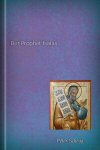
Der Prophet Isaias is a critical commentary on the book of Isaiah. Written in German, author Peter Schegg explores the linguistic and structural nature of the book while incorporating critical historical data into his examination of the text. The study and the author’s translation draw predominantly on the Vulgate, but also utilizes the Hebrew text. Schegg aims to present a unified portrait of Isaiah, one that shows how each passage in the book connects to the whole and is grounded in historical evidence.
Peter Schegg (1815–1885) was professor of theology at Würzburg, and later professor of Oriental languages at the University of Munich. A prolific author, his publications include The Life of Jesus in Six Books, The Psalms: Translated and Explained, and the ground breaking Biblical Archaeology, published posthumously.
Reviews
0 ratings

Mike Southerland
1/18/2014
The James Durham resource is excellent! I got it a few years ago from Naphtali Press. I'm excited to get this collection in Logos based on that one resource alone.